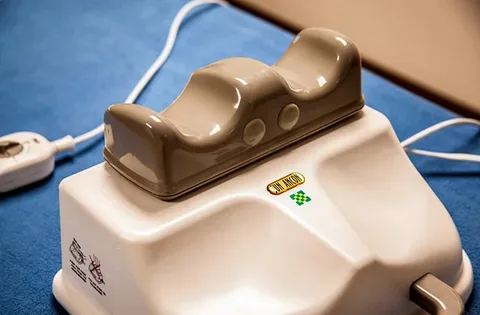The human body is a marvel of complexity, with intricate networks governing every function. Among these, the cranial nerves play a pivotal role in sensation, movement, and perception. There are 12 cranial nerves, though some esoteric textbooks claim a mysterious 13th, and a particularly ambitious researcher once proposed a 14th, hoping to etch his name into medical history. However, for all practical purposes, we stick to 12.
The number 12 has an almost mystical presence in our world. We see it in the 12 apostles of Jesus, the 12 zodiac signs, and the 12 months of the year. Some argue that an additional zodiac sign exists or that ancient calendars had 13 months, but without a direct descendant of the apostles to debate the matter, 12 remains the accepted standard. This universal number also corresponds to our cranial nerves, each serving a unique and vital function.
A Patient’s Unusual Complaint
Raj, a 55-year-old man, walked into my office one day, accompanied by his visibly frustrated wife.
“I can’t smell anything,” he said.
His wife sighed, explaining how he constantly complained that her cooking had lost its taste. Raj had a round face, a significantly large yet proportionally round torso, and an overall appearance that reminded me of a Russian nesting doll.
“My physician asked me to get an MRI and see you,” he continued, handing me the films. “He felt something was off.”
As I plugged the MRI films into the lightbox, I couldn’t help but smile—not out of amusement but because of the uncanny symmetry of his condition. There it was, a perfectly round tumor inside his perfectly round head, almost the size of a cricket ball. The irony of this imagery didn’t escape me, and more importantly, neither did the realization that this was most likely a benign tumor.
“You can’t smell because this tumor is pressing against your olfactory nerve,” I explained, pointing at the image. “The olfactory nerve is the first of the 12 cranial nerves, responsible for our sense of smell. When compromised, it can impact how we perceive taste. So, don’t blame your wife’s cooking—it’s not her fault!” I added with a grin, earning an approving nod from her.
Recognizing the Subtle Signs
Raj’s case was a testament to the keen eye of his physician, who had the insight to order an MRI for what many might dismiss as a trivial issue. Many patients with a diminished sense of smell are often told, “It’s just a cold,” or “Maybe it’s allergies.” However, for a neurosurgeon, anosmia (loss of smell) is sometimes the first clue to something deeper—a hidden tumor, like an olfactory groove meningioma. This type of tumor arises at the base of the skull, right where the olfactory nerves travel from the nose to the brain. When a tumor like this grows, it compresses the nerve, blocking sensory transmission.
While such tumors are usually benign, their location makes surgical removal a delicate task. I sat Raj and his wife down to explain the situation.
“We can fix this with a small operation,” I told them. “We don’t need to open the entire head as we did in the past. Instead, we’ll make a small incision above the eyebrow, access the tumor, and remove it.”
I used a skull model to illustrate the procedure, outlining both the risks and the expected outcomes. Despite the detailed explanation, I always marvel at the trust patients place in their surgeons. Even when told about the inherent risks, including a small but real chance of complications, they choose to move forward.
The Surgery: Precision and Patience
Two weeks later, Raj was wheeled into the operating room. We made a precise incision above his right eyebrow, lifting a square piece of bone to create a narrow pathway to the tumor. Using an ultrasonic aspirator, I meticulously reduced the tumor’s size—from a cricket ball to a golf ball, then to a pea. Finally, I carefully removed the last portion, which had flattened and displaced his olfactory nerve.
The hope was that, with the pressure relieved, the nerve might regain function over time. But with neurosurgery, results are never immediate. We had to wait.
A Satisfying Outcome
Three months later, Raj returned for a follow-up. As he entered my office, I noticed something immediately—his already large torso had expanded further. He caught my amused expression and laughed.
“The food now smells and tastes so good, what can I do!” he beamed.
It was a simple yet profound moment. The restoration of something as seemingly minor as the sense of smell had dramatically improved his quality of life. This experience underscored the significance of cranial nerve function and how disruptions, however small they seem, can alter daily experiences in profound ways.
Understanding Olfactory Groove Meningiomas
For those unfamiliar, olfactory groove meningiomas are slow-growing tumors that arise from the meninges, the protective layers surrounding the brain. Though benign, they can exert considerable pressure on adjacent structures, leading to anosmia, headaches, vision problems, and cognitive disturbances if left untreated.
Symptoms to watch for include:
- Loss of smell (anosmia)
- Gradual changes in taste perception
- Persistent headaches
- Visual disturbances (if the tumor expands toward the optic nerve)
- Personality changes (in rare, larger cases)
Advances in Neurosurgical Techniques
Decades ago, removing an olfactory groove meningioma required a major craniotomy—a procedure involving large skull openings and significant recovery time. Today, minimally invasive techniques have transformed patient outcomes. The approach we used for Raj, a supraorbital keyhole craniotomy, is a prime example.
This method:
- Uses a small incision hidden within the eyebrow
- Reduces post-operative pain and scarring
- Speeds up recovery
- Minimizes risks compared to traditional open brain surgery
A Lesson in Healing and Trust
Raj’s story highlights not only the marvels of modern neurosurgery but also the deeply human aspect of medicine. As a Best Neurosurgeon in Mumbai, I have the privilege of seeing how restoring even the most fundamental functions can bring immense joy and renewal to a patient’s life.
For anyone experiencing persistent issues with smell, unexplained headaches, or vision changes, seeking medical advice is crucial. Early diagnosis can make all the difference. And for those facing the daunting prospect of brain surgery, advancements in neurosurgical techniques now offer safer, more effective solutions.
Final Thoughts
Medicine is not just about treating diseases—it’s about restoring lives. Raj’s journey from anosmia to rediscovering the joy of taste and smell is just one example of how neurosurgery can change lives.
For those seeking the Best Neurosurgeon in Mumbai, expertise, precision, and compassionate care go hand in hand. And for patients like Raj, sometimes all it takes is one small incision to open the doors to a world full of aromas, flavors, and, ultimately, happiness.












































